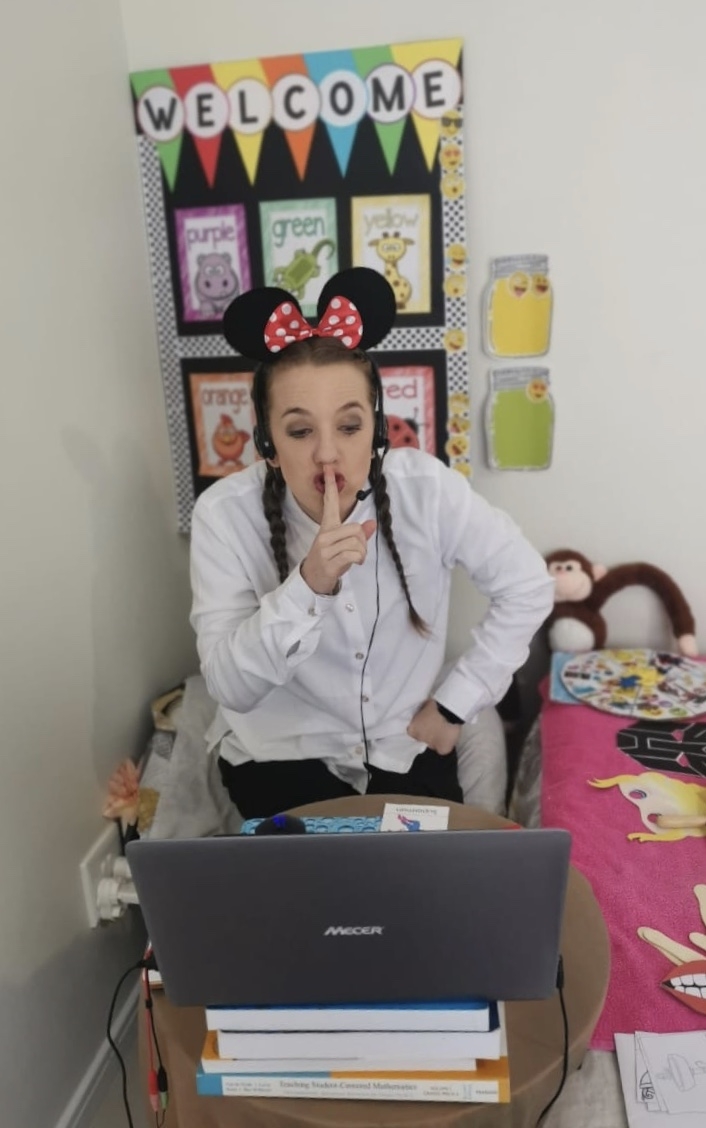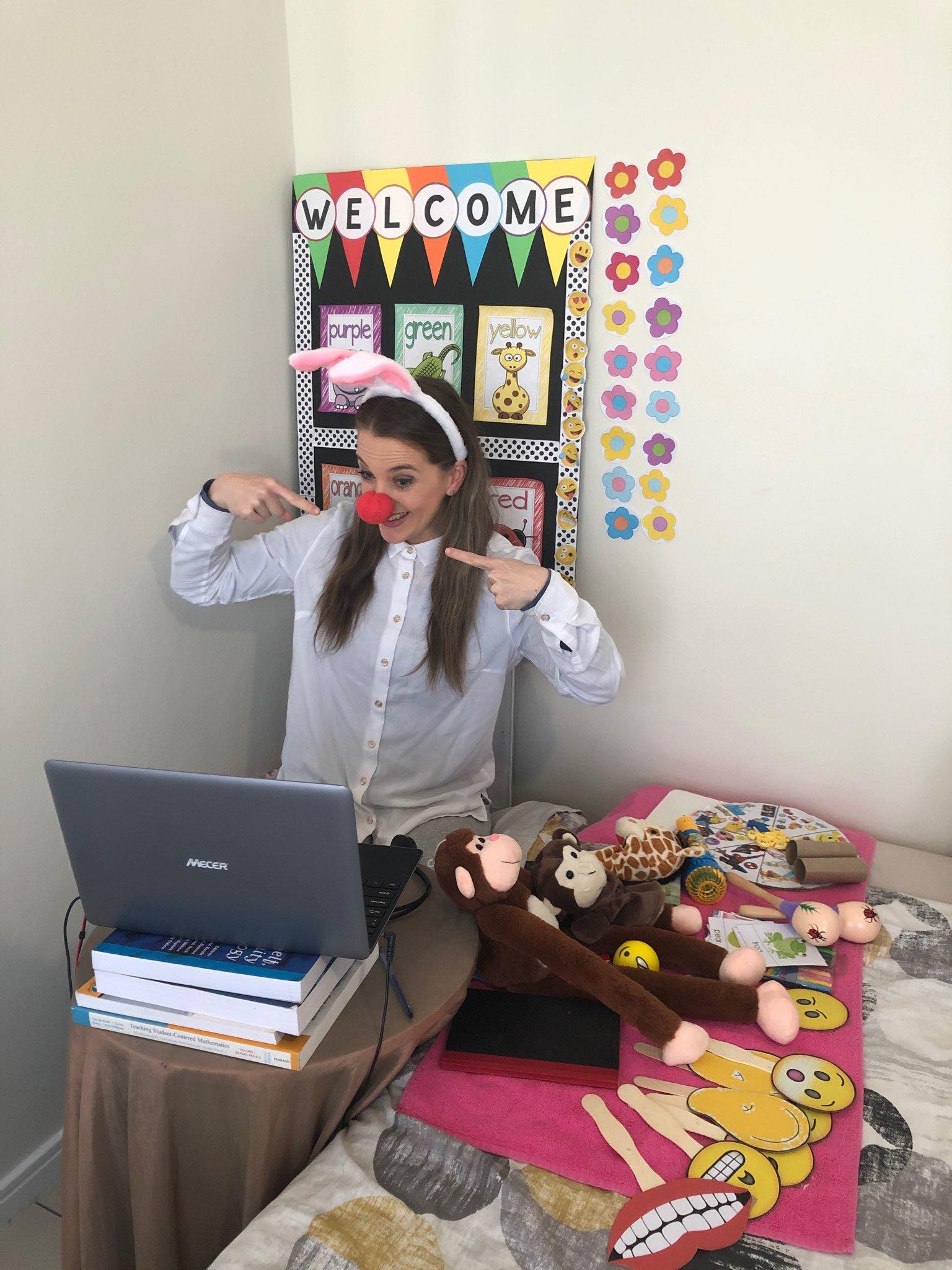As an online English teacher, I sometimes don’t realise how important classroom management is – so I’ve got some effective classroom management tips to share with you today. Regardless of whether you are teaching in-person or online, being able to effectively manage your classroom is key. You are often evaluated not only by the way you teach, but how you handle students in your classroom. Recently I wrote about 10 things I wish I knew before teaching English online, and now I am here to share my top tips with you for managing a classroom.
To have successful lessons, it is important to always look to improve and find new methods of control, discipline and effective management. This can be useful when managing groups of learners. And some classes can have anywhere from two to thirty people. That might sound crazy, but soon enough, you could be teaching group classes like this too. When it comes to teaching children in particular, routine is very important, and this will have an influence on your teaching style. Let’s have a look at some tips for managing these types of group learners.
Get to know the students in your classroom – Yes, that means all of them!
A lot of online teaching companies do not share details of learners before classes. So you might not know their ages, language level or even how many students you will be teaching in a class. But don’t worry, because I am here to help you. What you need to do, is to get to know the students individually. In order to do this, all you need to do is ask them some basic questions before starting your class. Need some examples of some questions? Here you go!
- What is your name?
- How old are you?
- What is your favorite color?
- What did you do today before your class?
By asking these types of simple questions, you will be able to make an initial evaluation of their English level. If they can answer these questions with ease, then you can be confident that they are able to understand basic English conversation. If they struggle to answer these questions, then they are likely to be a beginner. You can also usually tell which students are strong learners and who might need more guidance. This type of classroom management allows you to assess English language levels. This means you are sure to set yourself up for success when teaching.

Implement classroom rules
It is very important to share the rules of the classroom with your learners, especially if they are younger. Because younger learners can get distracted easily, most teaching platforms prefer to put them in smaller sized classrooms. The less disruption in your class, the smoother it will be. Here are some simple classroom management rules that you could implement when creating your own virtual classroom.
- Sit well – you could demonstrate to your students how you want them to sit while you are teaching. For example, folding your arms in front of you. You should allow them to try to follow your instruction and understand it.
- Listen – to indicate that you want your learners to listen, you could cup your hands over your ears or even use cut-out ears. This will help them to understand that it is time to listen to the teacher.
- Eyes on me – if you want to grab the attention of your learners, you could point to your eyes and then point back to your chest. This should indicate to the students that you want their full attention.
- Hands up – one of the most popular teaching methods across all settings is the “hands-up” method. Using this will teach your students that they have to be patient and wait their turn. It also helps them to understand that by raising their hand, they are able to ask a question without shouting over everyone else. This is an excellent example of learning discipline in the classroom.
- Quiet – one of the simpler techniques to grab the attention of learners is the finger-on-lips action. By putting your finger over your lips, you are indicating to the students that you want them to be quiet. This works well when you want to repeat something.

Classroom management through engagement and interactivity
When you teach English online, you could have two learners in a group class. However, you could also have thirty students. Keeping them all engaged is key, because typically the more students you have in a lesson, the more chance there is that someone will lose focus or be disruptive. However, class size really does depend on the company you work with. Check out our blockbuster guide of online teaching platforms to see which one fits you and your needs or if you want to teach children or adults specifically.
Your energy and excitement is what makes the students want to be there. And there are so many ways to keep them engaged throughout lessons, including warm ups and coolers, singing, videos and games. Premier TEFL has also come up with a bunch of resource ideas that you can use to keep students engaged.
Here is an example of using a warm up for older students. Teach the learners the warm up activity and allow them to say it fast by timing them to see who can say it the quickest. They usually love the competition between one another.

Here are another few examples of some games you can use in the classroom. And don’t forget, you must include all learners!
- “Simon Says”
- “I spy, with my little eye”
- Memory games
- Matching games
- Spinning wheel guessing game
Classroom management through thorough preparation
For your lesson to be successful, you need to be prepared. This means being prepared for beginner learners, and also for students who are at a more advanced level. It is also always a good idea to have back-up materials because anything can happen in class. Sometimes the materials may not load properly or there are some technical issues.
Having something readily available, even in paper form in front of you, can be a life-saver. You may also have flashcards or other props that you have used for other lessons. Use these if you need to. Impress your company and your students. By showing you are prepared, they will love you. Being organized is a blessing for teachers and it will most certainly help you retain students and further develop your own skills.
Involve your learners as much as possible
Another one of my effective classroom management tips is to always keep students involved in the lesson, however difficult that may be. Practice what you preach to your learners by rolling your arms and putting your hand up to indicate that it is your turn to speak. Then ask the class who would like to go next. This gives them learners a chance to decide if they want to get involved in this part of the class. Those who are enthusiastic and want to learn will usually raise their hand first.
You can then choose a few of the students and create a scenario for them to engage in conversation and open up a dialogue. Always remember to involve all learners though, because some of them will try to hide behind the others in the class and not speak up. You will get quiet learners a lot, but it is your job to try and motivate them, encourage them and ultimately help them to become better at communicating in the English language.

Classroom management via a rewards system
Rewards as part of classroom management is so important – I can’t emphasize this enough. But the issue lies in how you use rewards when teaching larger groups. A great way to do this is to split the class into two groups, a boys group and a girls group. They typically love competing against each other and it gives them something to look forward to. Some platforms will allow you to give virtual trophies to the learners. So always make sure to make it even and involve everyone for their effort.
When it comes to rewards, it is often the case that some learners may get more rewards than others because they get more involved. This is normal, but if you are a superstar teacher, then you will be able to recognise the effort put in by those who don’t talk so much. Each student is individual and their needs will be different to everyone else. This is why it is important to recognise their effort as much as those who come across as the most interactive.
Control learner behavior
As an online English teacher, you are always going to have students who are a little noisy or disruptive. This can be quite negative and affect the learning environment for everyone else. This is where the mute button can come in very handy. With this, you will be able to mute the disruptive student until it is their turn to talk. Thankfully this doesn’t mean that they cannot hear the lesson, it just means they cannot continue to be disruptive.
As a whole, if you are able to follow these simple classroom management tips, you will be able to teach any student. It doesn’t matter the age, the level or the number of students, as you will become a TEFL superstar in no time. If you want to know more about my journey as an English teacher, then check out this article about my time in Thailand and getting started teaching online.
The post 7 Classroom Management Tips for Teaching Groups Online appeared first on Premier TEFL.




